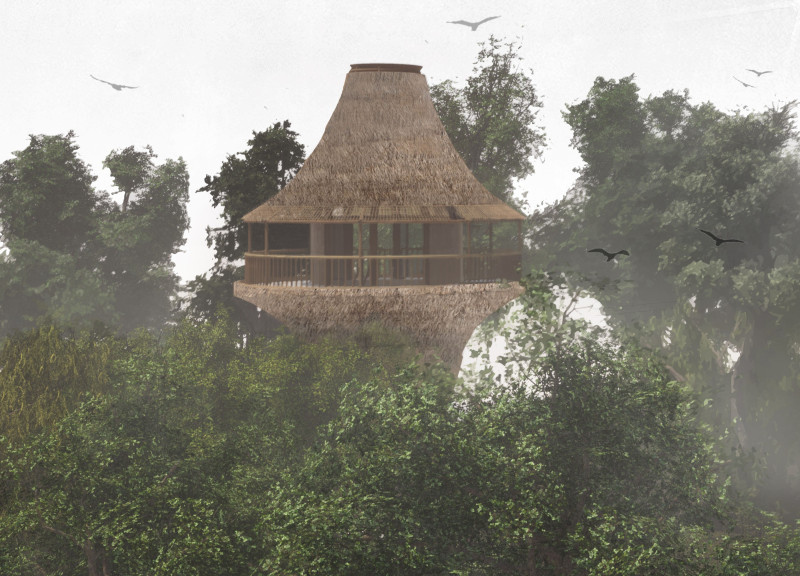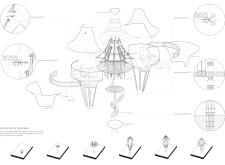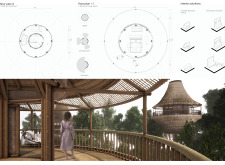5 key facts about this project
The Chakrasana Vine Yoga Retreat, situated in Cambodia, offers a unique space designed to tackle environmental issues while providing a peaceful setting for reflection and mindfulness. The design concept focuses on sustainability and ecological balance, promoting a deep connection with the surrounding landscape. The retreat utilizes a circular layout that fits into the natural gaps among the trees, enhancing privacy and creating intimate spaces for visitors.
Spatial Organization
This design incorporates an elevated structure that minimizes its impact on the land. By lifting the buildings off the ground, the design encourages better air circulation and enhances the overall relationship with nature. The arrangement of spaces is intentional, fostering privacy while allowing guests to feel immersed in the lush surroundings, making it conducive to relaxation.
Sustainability Features
A distinct aspect of the retreat is its efficient water management system. The roof has a funnel shape that captures rainwater effectively, channeling it into tanks. This design supports electricity generation, promoting a self-sufficient environment. Additionally, the careful orientation of the buildings maximizes natural light and cooling breezes, further reducing energy use and environmental impact.
Material Use
Bamboo plays a prominent role in the construction, making up 90% of both the structure and its finishes. This renewable material reflects local building traditions while supporting the retreat’s commitment to sustainability. Using bamboo allows for lightweight construction that remains durable, adapting well to the local climate and conditions.
Construction Techniques
The building uses traditional methods such as tying and screwing, which make it easy to disassemble if needed. This approach focuses on resourcefulness and adaptability in the building process. The spaces within the retreat feature movable walls, offering flexibility. Guests can adjust the layout according to their needs, which enhances comfort and usability.
The design culminates in a roof that draws attention, serving not just as a functional element but as a visual mark that highlights the retreat's connection to the environment. The roof’s form, alongside the building's overall design, shapes an experience that invites guests to engage with both nature and their own tranquility.






















































